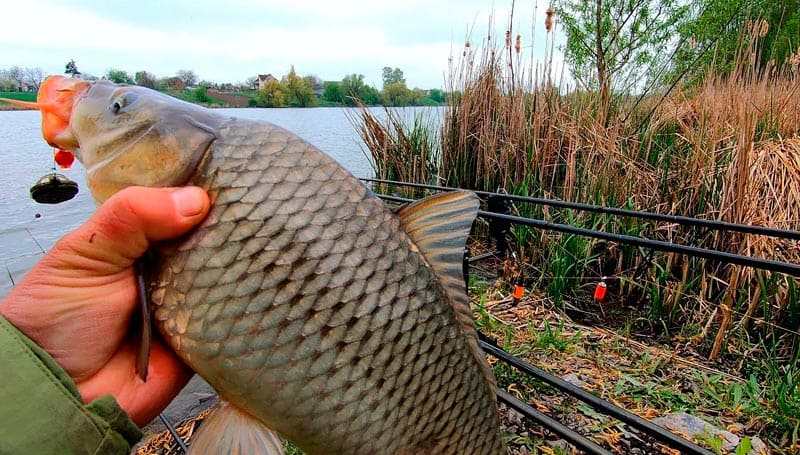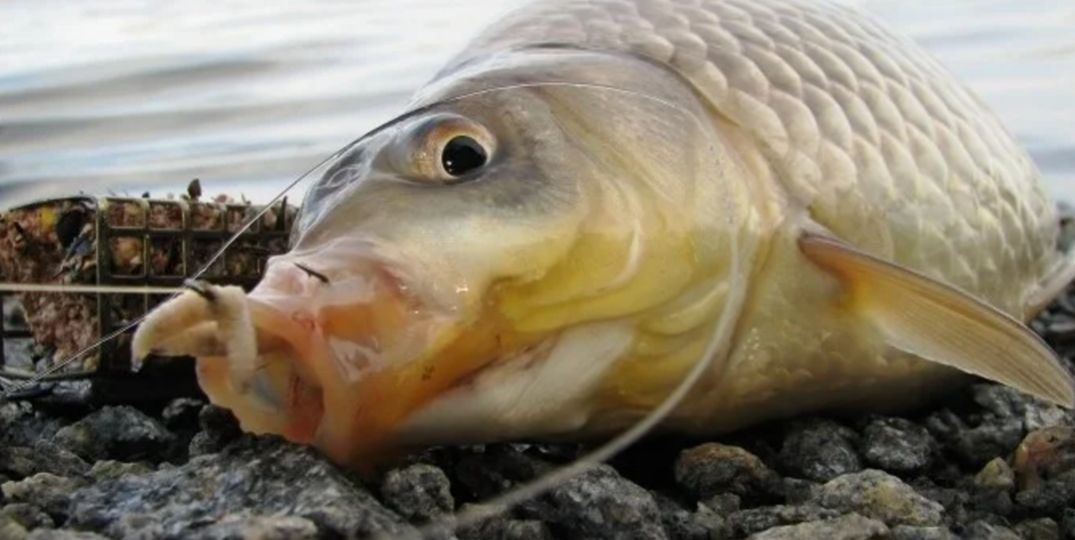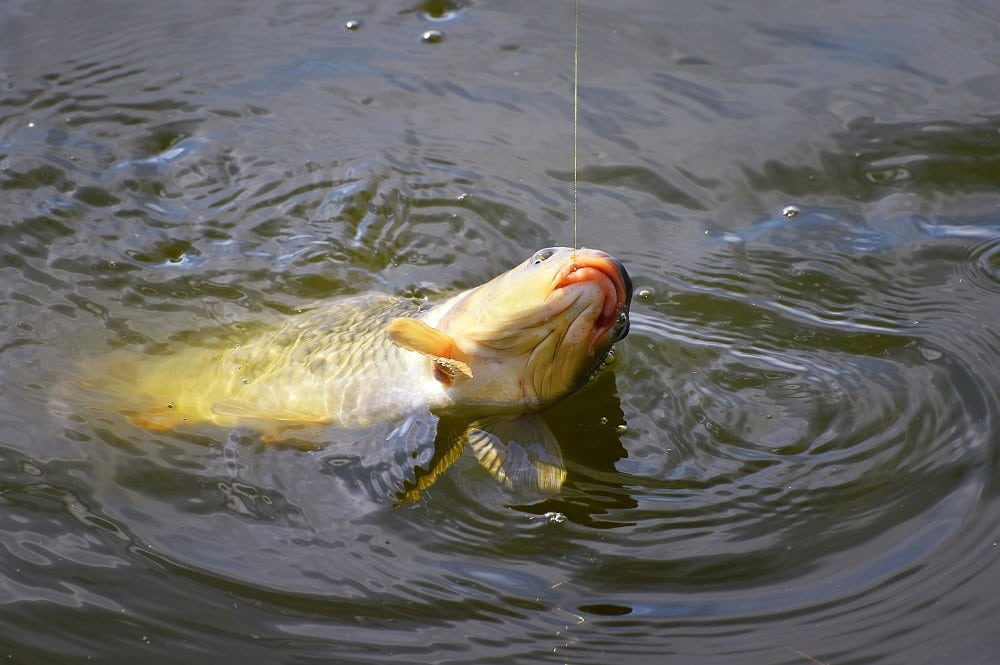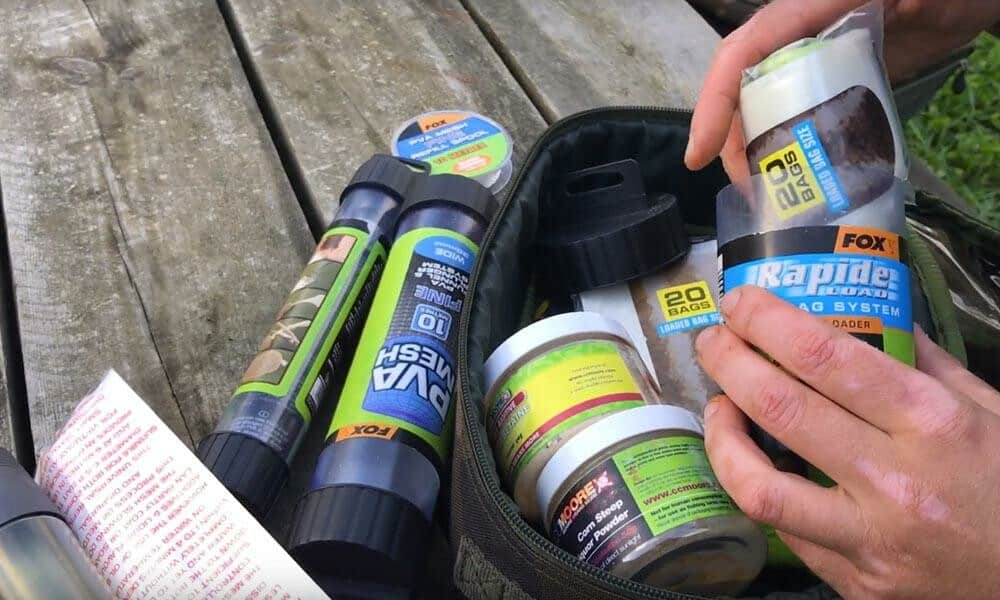Fishing for carp on a feeder is gaining more and more popularity, due to the fact that in recent years, carp fishing tackle
has become more and more available for ordinary fishing enthusiasts, and not just professional athletes. Of course, you can fish with more
professional rods specially designed for carp fishing , but not all beginners are ready to shell out a considerable sum to buy this tackle.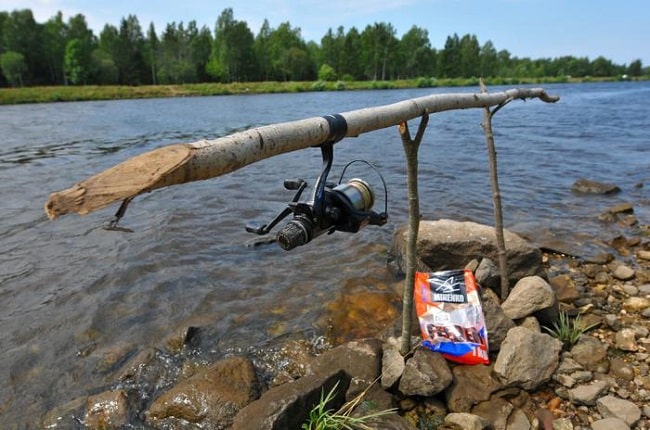
Assembling the feeder tackle
Feeder equipment for carp differs from usual fishing on a
donk , first of all, by a special design of equipment and the presence of a feeder without fail. But first, you need to correctly complete the rod.
Fishing rod selection
All feeder rods differ in a number of basic criteria:
- system;
- test;
- size (length).
When fishing on a feeder, the system is chosen fast, since only a powerful throwable rod can throw a feeder with bait at the required distance
.
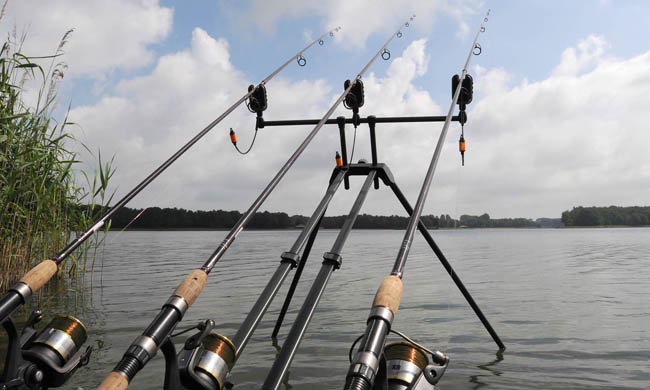
- Feeder class 2.7-3.3 meters long, with a casting (test) of about 70 grams . Often used on small ponds and slow flowing rivers.
- Ultra-light. For a feeder, casting ultralight is 15-35 grams . They catch it, as a rule, in stagnant bodies of water, or in places where the current is almost imperceptible. Another distinctive feature of the test of this feeder rod is the fishing distance. For example, if you choose a blank with a length of up to 2.4 meters, then the optimal casting range for it will be a distance of up to 30 meters, and if the size is more than 2.7 meters, then you can throw the rig already at 50 meters.
- The size of the universal feeder rods is 3.1-3.6 meters. Test boundaries in the range of 70-100 g . This is a class of carp feeder blanks we recommend for beginner anglers.
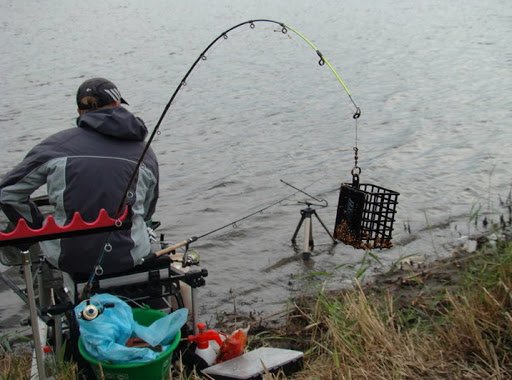
- “Heavy” feeder, as it is mainly used for fishing for long-distance casting of bait. The size of this rod is in the range of 3.3-4.2 meters. Casting is 110-120 gr .
- Super heavyweight among all feeders. It is used for very long power casts and in places where there is a strong current, where it is necessary to use heavy feeders. The size is up to 4.2 meters. Casting – over 120 gr .
Coil selection
If you study the recommendations of professional fishermen, then we can summarize that for feeder carp fishing it is best to choose a spinning reel with a spool volume of 3500-4500 Shimano and a front drag (more reliable). At the same time, experts advise choosing a “meat grinder” with a baitruner, with the help of it you can instantly remove the friction clutch and not allow the fishing rod to break or the tackle to break off while fishing for large fish.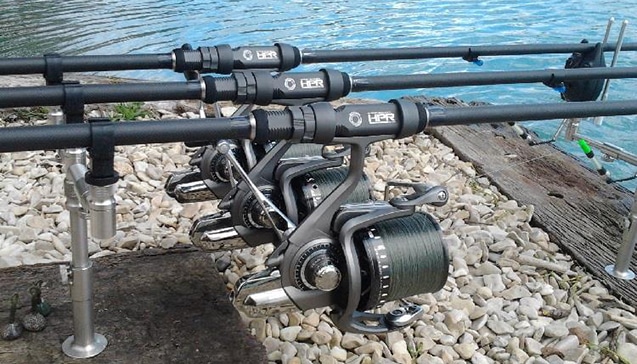
Cord or fishing line
Again, if we consider the recommendations of experienced anglers, then it is best for a long-range carp feeder to choose a line. It is as elastic as possible and perfectly shows the most accurate bites of fish. However, monofilament line can also be used for short distances, it absorbs fish jerks better at short distances. For casting the bait at a distance of up to 50 meters, as a rule, a line with the minimum elongation is chosen, for example, Shimano “Technium”, since it practically does not stretch, which brings it as close to the line as possible.
Carp hooks
In this case, as in every fishing for different fish, the size of the
hook will depend on the weight of the possible catch. For carp feeder fishing, hooks No. 6-10 are mainly used. https://tytkleva.net/lovlya-mirnoj-ryby/karpovaya-rybalka/kryuchki-dlya-rybalki.htm
Feeders for feeder tackle
The main task of the
feeder when fishing on a feeder is to deliver food to the place of fishing, as well as to interest the carp and keep it in this area. By and large, a feeder is a bunker filled with feed, attached to a fishing line near a baited hook. By their design, feeder troughs can be as follows:
- Closed . They are used for fishing in bodies of water in which there is a strong current. These attachments are equipped with lids on the sides and holes for bait outlets. As a rule, they are used for animal feed – bloodworms , worms, maggots .
- Semi-closed . They are used for ponds with a small current.
- Open . With the help of such feeders, carp is caught on a feeder in a pond in which there is no current or it is not pronounced. These feeders are clogged with loose bait, for example, porridge, where maggot or chopped worm is added. Both sides are open to ensure an even washout of the feed.
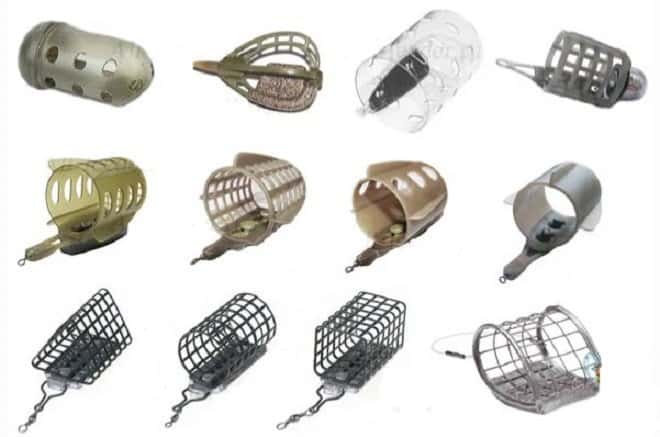
Feeders can be very different in shape. Most often, the following types are used in feeder fishing:
- “Cage” . The spring is made of a steel body in the form of a mesh, which is made in all kinds of variations. It happens round, triangular, square, oval. Due to this variety, it can be easily used on different types of reservoirs.
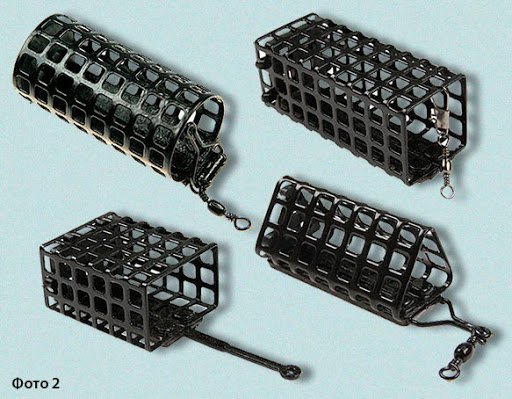
- Spiral . This is the name of the spring, which is made in the video in a special shape in the form of a spiral. It contains a hollow core that moves freely along with it along the cord. This spring is best suited for long casts. It must be filled with extremely viscous baits, since others are quickly washed out.
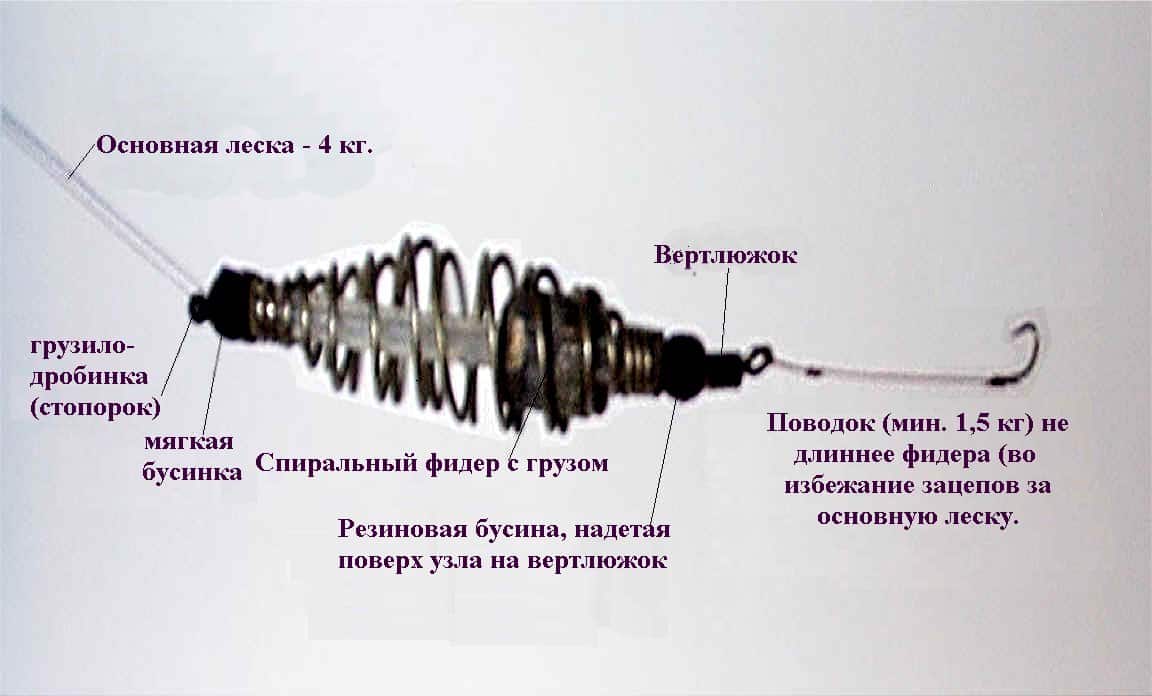
- “Method” . It resembles a grate where feed is pressed. The main task of this form is to send a nozzle to the place of fishing at the same time as the bait.
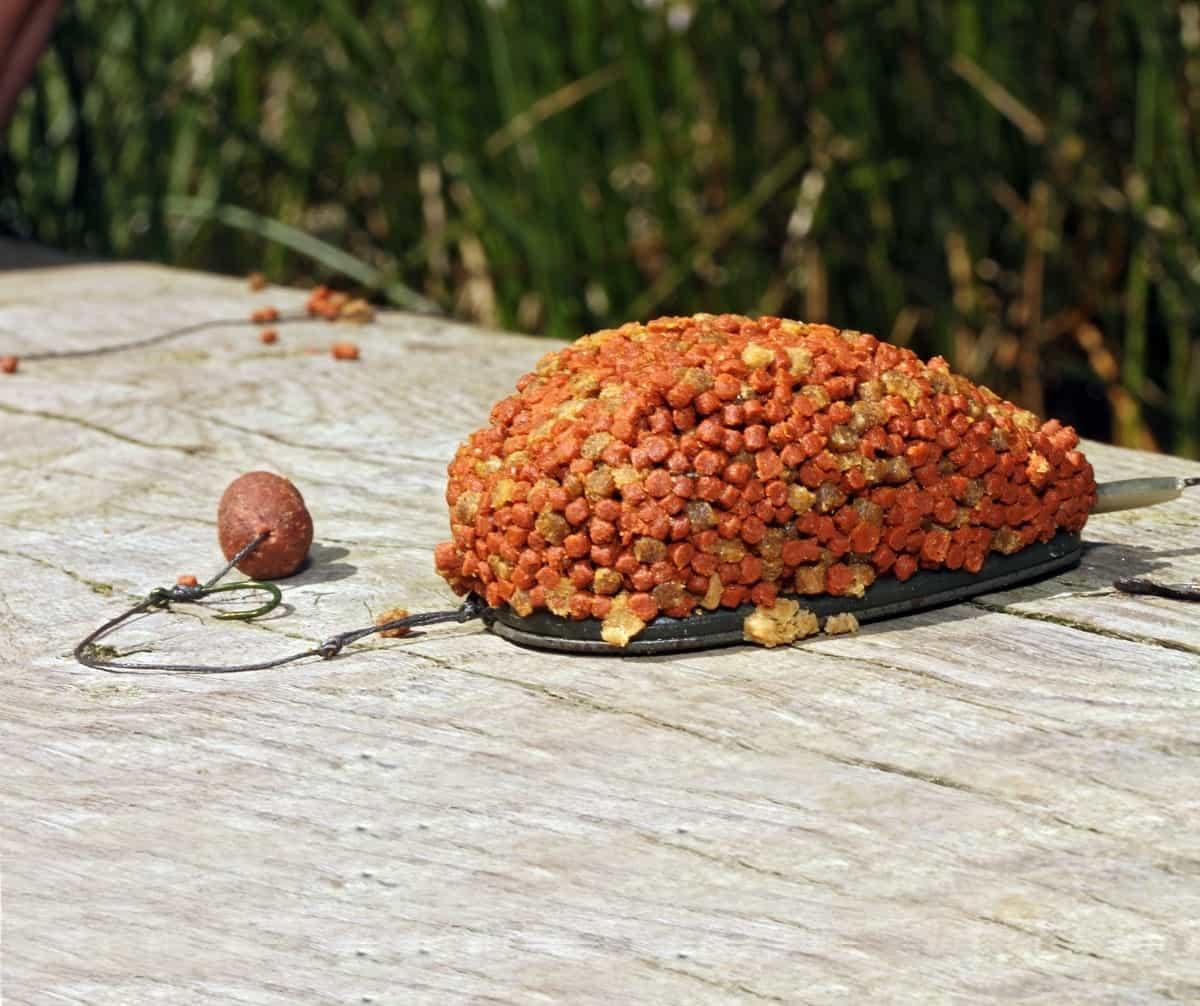
- “Labyrinth” . This spring shape is like a sponge twisted with threads. Before throwing it into the water, the feeder is placed in a container with maggots making their way into the “labyrinth”. In the reservoir, on the contrary, after a while, the living creatures gradually come out, attracting fish by this.
Groundbait recipes
Before fishing with a carp feeder, you need to first take care of several
recipes for bait . It is required to attract fish, but at the same time, carp should not get enough food, but only become interested and peck at the nozzle that is on the hook. It is no secret that all carp fish are large omnivorous fish that consume food quickly and in large quantities. Therefore, when fishing, you must have a lot of food, at least 10 kg for one day. Feeder bait can be made by hand, here are the most common recipes.
Biscuit
Main components:
- cookies “Baked milk” and “Oatmeal” – 1 glass each;
- oatmeal – 1 glass.
- corn flour – 0.5 cups;
- ground toasted peanuts – 200 g.
Grind the flakes and cookies finely. Next, all components must be thoroughly mixed and packaged in sachets. On the pond, add animal bait and, without fail, attractants, taking into account the season.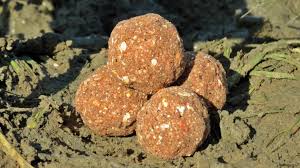
Honey with chocolate
Required Ingredients:
- white flour – 1 cup;
- ground corn – 1 cup;
- salt – 1 tsp;
- honey – 4 tsp;
- chocolate – 1 bar.
Salt is poured into the flour and all this is fried in a pan. With the help of a steam bath, you need to melt a bar of chocolate. When it cools down, add a glass of boiling water mixed with honey. In this case, the composition must be constantly stirred. After cooling, mold the balls and roll in flour.
Food for cats or dogs
For cooking you will need:
- semolina – 1 glass;
- dry cream – 200 ml;
- pellet food for cats or dogs – 1 glass;
- sugar – 200 grams;
- bread crumbs – 1 glass;
- toasted ground peanuts – 0.5 cups;
- millet, corn or oat flakes – 1 glass;
- bran – 1 glass;
- corn grits – 500 gr.
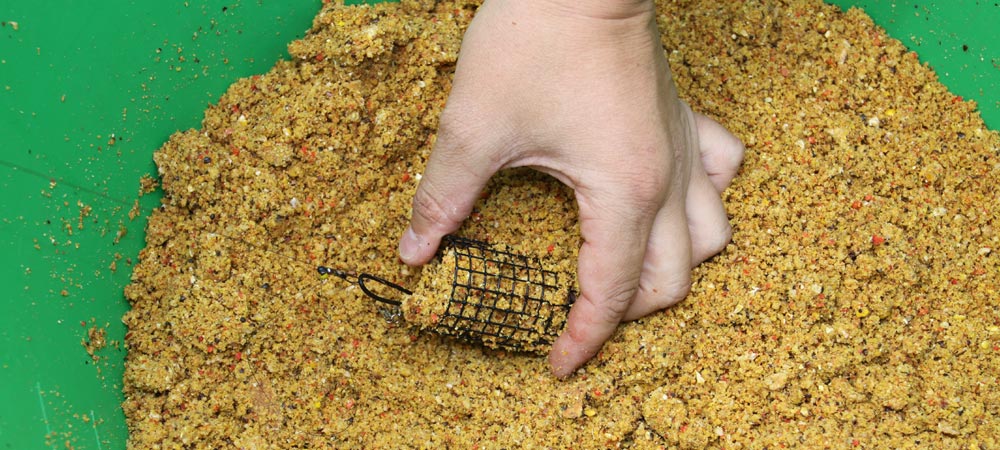
All components are well mixed and left for half an hour so that the prepared composition can be saturated with smell. Upon arrival at the pond, you need to add a small amount of water from the pond and let the prepared mixture brew again for about 30 minutes. Carp bite on the feeder – video from the reservoirs: https://youtu.be/NqhB_n1XwuQ
How to add carp groundbait
Fishing with a feeder on rivers, large lakes, small ponds implies different options and methods for baiting carp, they will depend on the casting distance:
- if the place of fishing is at a short distance from the coastline, then the balls of bait can be thrown by hand;
- at a considerable distance, a slingshot is used, which can shoot balls at a distance of up to 50 meters from the shore.
If the latter is absent, then a “rocket” is used for feeding. This device does not sink. When it is in a pond, it simply floats upside down, and the bait that is inside falls into the right place. River Feeder Fishing for Beginners – Expert Video: https://youtu.be/gfuLRIQg_64
Feeder fishing in different seasons
Carp picks up standing ponds or rivers with little current. The bottom in these areas must be soft, and sometimes carps are also found on hard soils, where there is a large amount of shellfish. At the same time, the fish adores water areas that are densely overgrown with algae. Most often, these individuals lead a gregarious lifestyle, and only very large carps are sometimes alone.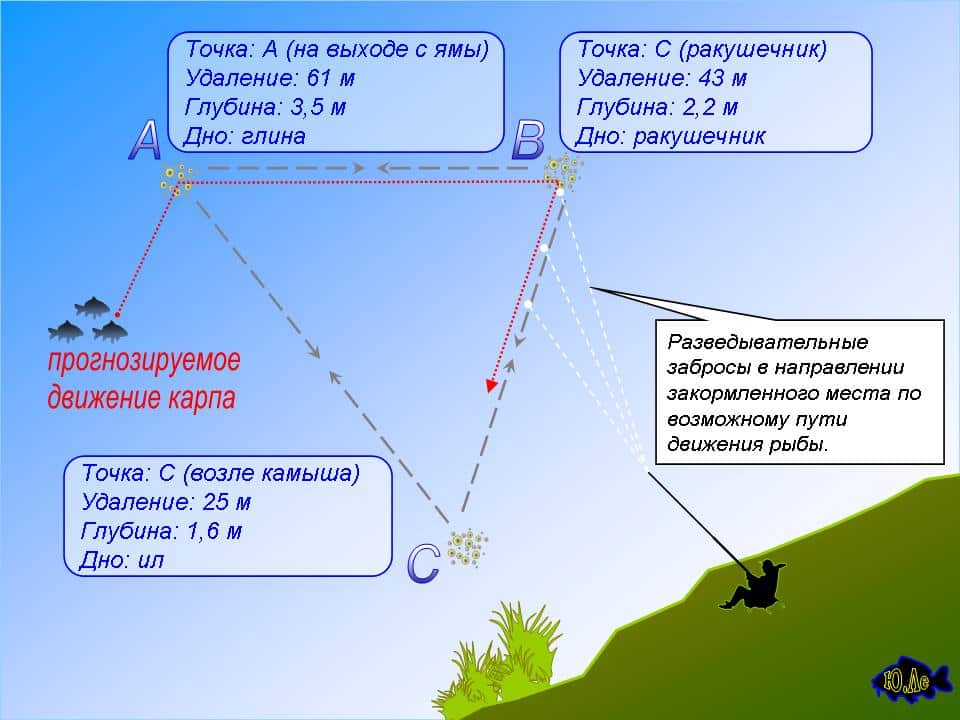
Spring
Carp feeder fishing in the spring begins to occur from the end of March, when the reservoir warms up to a temperature of more than 15 degrees. At the same time, it is recommended to fish in canals and ponds, into which fish are sent from open rivers to warm up and find food for themselves. In springtime, animal baits work best:
Before spawning begins, the bite becomes as active as possible, at this time the largest specimens can be caught. Power casting will not be required in spring, as the carp is located near the coastline in shallow water. It is necessary to feed it in small portions of a small fraction of feed.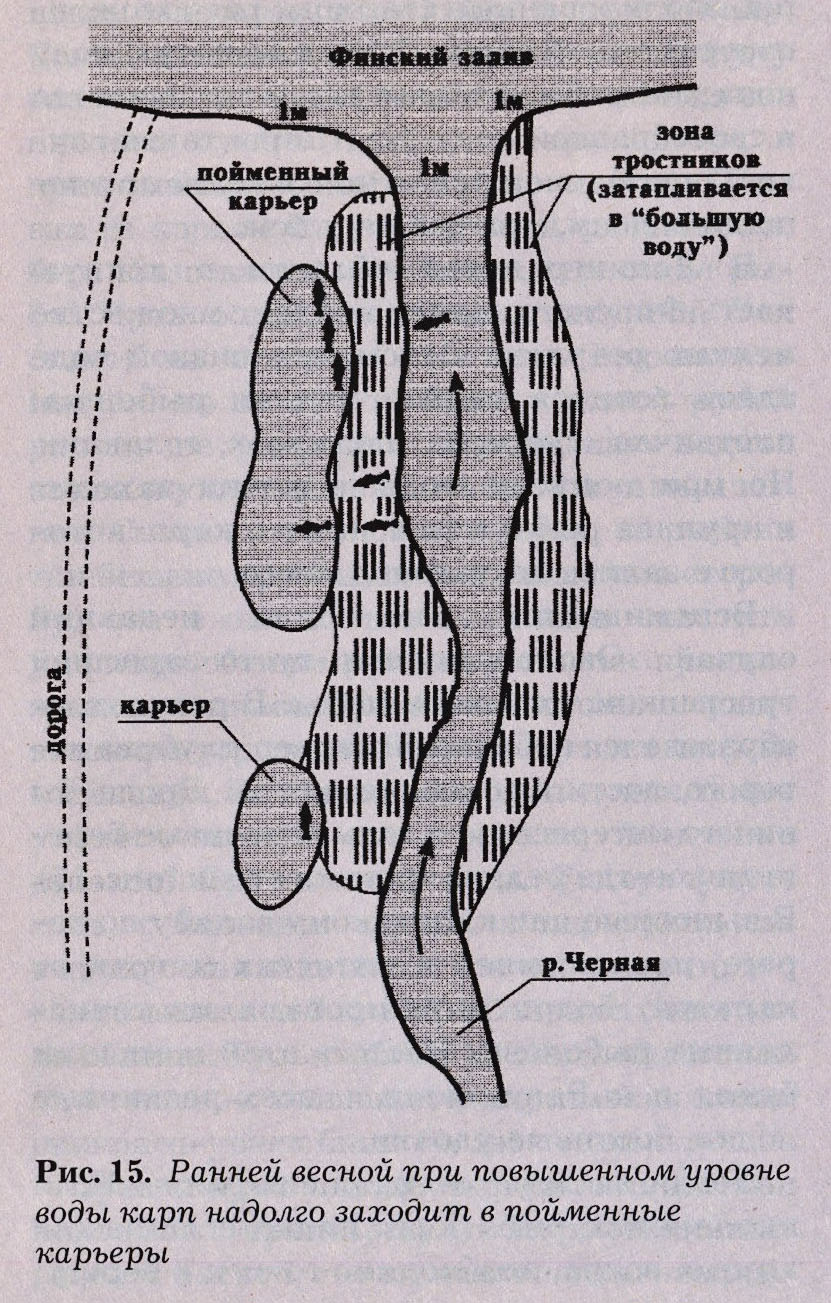
Summer
In summer, in a warm reservoir, the fish becomes more active, and begins to strenuously search for food. Fishing for carp with a feeder in summer is best done on cloudy days, during a thunderstorm, when the air pressure drops. During bright sunny days, biting usually occurs early in the morning or late at night. It is best to fish at a depth of 4 meters. In the summer season, plant baits are used as baits:
For bait, you can use a variety of grains of any crop.
Catching carp on a feeder in the summer on a paysite – video from an expert: https://youtu.be/_VqW8d4Cl4Y
Autumn
In autumn, carps become very passive. The fisherman needs to increase the pauses between casting the tackle up to half an hour, and in certain situations, do them at intervals of one hour, if the fish in the pond is rather shy. The chances of catching carp in the fall are greatly increased in September, while at the end of the fall season they are almost zero. Try to add more animal bait and maggot and chopped worm mixes. The more the reservoir cools, the deeper the carp goes into its bowels. In this case, it is no longer possible to find fish basking in shallow water, even if the sun is shining all day. It is recommended to throw the tackle at depths of 4+ and feed the tables in deep water areas. How to catch carp with feeder tackle – popular video for beginners: https://youtu.be/nkcsWnsuFoM Carp feeder fishing is effective and simple,if you understand the basics and have the proper skills. If you approach the rod equipment correctly and study the fishing technique, then fishing for carp with feeder tackle even for beginners will not be a problem. The main advantage is that this rig makes it possible to fish in distant places, and concentrate on one feeding area in the pond.
